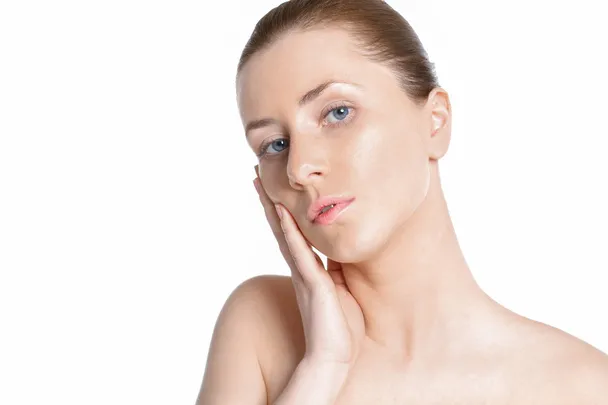Understanding the Signs of Vitamin C Serum Degradation:
Vitamin C serums are cherished for their ability to brighten the complexion, fade dark spots, and protect the skin against environmental damage. However, like many skincare products, vitamin C serums can lose their efficacy over time due to various factors, including exposure to light, air, and temperature fluctuations. Here’s how to tell if your vitamin C serum has gone bad and when it’s time to replace it:
Change in Color: Absolutely, recognizing changes in color is paramount when assessing the stability and effectiveness of your vitamin C serum. Here’s why:
- Freshness Indicator: The initial clear or slightly yellowish hue of a vitamin C serum serves as a visual cue of its freshness. This coloration is due to the presence of stable, active vitamin C compounds.
- Oxidation Process: Over time, exposure to air, light, and temperature fluctuations can lead to the oxidation of vitamin C molecules within the serum. This process causes the serum to change color, typically progressing from yellow to orange and eventually brown. These changes indicate that the vitamin C has become unstable and less potent.
- Effectiveness Concerns: Discoloration in vitamin C serum signifies a loss of efficacy. Oxidized vitamin C molecules are less capable of delivering the antioxidant and brightening benefits associated with fresh formulations. Continued use of a degraded serum may not yield the desired results and could even cause skin irritation.
- Replacement Recommendation: When significant color changes occur, it’s advisable to discontinue use of the serum and replace it with a fresh bottle. This ensures that you continue to receive the full benefits of vitamin C in your skincare routine.
By staying vigilant for changes in color, you can proactively maintain the potency and efficacy of your vitamin C serum, ensuring optimal results for your skin.
Change in Smell: The sense of smell can provide valuable insights into the condition of your skincare products, including vitamin C serums. Here’s why changes in smell are significant indicators of serum degradation:
- Initial Fragrance: Fresh vitamin C serums typically exhibit a subtle citrus fragrance, reflecting the natural scent of the vitamin C ingredient. This light, refreshing aroma is often indicative of a well-formulated and stable product.
- Oxidation and Bacterial Growth: As vitamin C serums degrade, they become more susceptible to oxidation and bacterial contamination. These processes can result in the development of unpleasant odors, often described as resembling hot dog water or metallic notes. These malodorous scents signal that the serum has undergone chemical changes and microbial proliferation, rendering it ineffective and potentially harmful to the skin.
- Quality and Safety Concerns: A strong, off-putting odor in your vitamin C serum is cause for immediate concern. It indicates that the serum has surpassed its shelf life and is no longer suitable for use. Continued application of a degraded serum may lead to skin irritation, breakouts, or other adverse reactions.
- Disposal Recommendation: When a vitamin C serum exhibits a significant change in smell, it is essential to err on the side of caution and discard the product. Continuing to use a serum with an unpleasant odor poses risks to skin health and may compromise the efficacy of your skincare routine. Investing in a fresh bottle ensures that you continue to receive the full benefits of vitamin C without the potential drawbacks of a degraded product.
Decreased Efficacy:
Monitoring the effectiveness of your vitamin C serum is crucial for maintaining optimal skincare results. Here’s why a decline in efficacy serves as a key indicator of serum degradation:
- Initial Benefits: Freshly formulated vitamin C serums offer a range of skincare benefits, including brightening the complexion, evening out skin tone, and protecting against environmental damage. These effects are attributed to the active and stable vitamin C compounds present in the serum.
- Degradation Factors: Various factors, such as exposure to air, light, and temperature fluctuations, can compromise the stability of vitamin C serums over time. Improper storage or packaging that allows air and light to penetrate the formula can accelerate the degradation process, leading to a loss of potency.
- Diminished Results: As vitamin C molecules degrade, their ability to deliver skincare benefits diminishes. You may notice a decline in the serum’s effectiveness, characterized by reduced brightness, unevenness in skin tone, or a lack of improvement in targeted concerns such as hyperpigmentation or fine lines.
- Skin Response: Paying attention to how your skin responds to the serum over time is essential for gauging its efficacy. If you observe that your skin no longer exhibits the desired improvements or fails to respond positively to the serum, it may indicate that the vitamin C has degraded and is no longer delivering optimal results.
- Replacement Consideration: When you notice a decline in the effectiveness of your vitamin C serum, it’s a clear indication that it’s time for a new bottle. Continuing to use a degraded serum not only compromises your skincare results but may also lead to skin irritation or other adverse reactions.
Texture Changes:
Fresh vitamin C serums typically have a lightweight, watery texture that absorbs quickly into the skin. However, as the serum degrades, its texture may become thicker, tackier, or even gritty. These changes in texture can occur due to the breakdown of the vitamin C molecule and other ingredients in the serum. If you notice any changes in the consistency or feel of your serum, it may be a sign that it has gone bad.
Packaging Integrity: Observing changes in the texture of your vitamin C serum can provide valuable insights into its stability and effectiveness. Here’s why alterations in texture serve as an important indicator of serum degradation:
-
Initial Consistency:
- Freshly formulated vitamin C serums are prized for their lightweight, watery consistency, which allows for effortless application and quick absorption into the skin. This texture is indicative of a well-formulated and stable product that delivers optimal skincare benefits.
- Degradation Process: Over time, exposure to air, light, and temperature fluctuations can compromise the integrity of vitamin C serums, leading to changes in texture. As the serum degrades, its molecular structure may break down, resulting in alterations such as thickening, tackiness, or grittiness. These changes indicate that the serum’s formulation has become unstable and less effective.
- Breakdown of Ingredients: Texture changes in vitamin C serums can stem from the breakdown of the vitamin C molecule itself, as well as other ingredients in the formula. Oxidation and chemical reactions within the serum can alter its composition, resulting in shifts in texture that are perceptible upon application.
- Signs of Deterioration: Noticeable changes in the consistency or feel of your serum may suggest that it has surpassed its shelf life or been exposed to unfavorable conditions. Thickened or tacky textures may indicate oxidation, while grittiness could signal the precipitation of unstable ingredients. These textural abnormalities are clear indicators that the serum has degraded and may no longer provide the desired skincare benefits.
- Replacement Consideration: When you detect changes in the texture of your vitamin C serum, it’s essential to consider replacing it with a fresh bottle. Continuing to use a degraded serum not only compromises its efficacy but may also lead to skin irritation or other adverse reactions. Investing in a new bottle ensures that you continue to experience the full benefits of vitamin C in your skincare routine.
it’s essential to pay attention to the signs of vitamin C serum degradation to ensure that you’re getting the most out of your skincare products. By monitoring changes in color, smell, texture, efficacy, and packaging integrity, you can determine whether your serum has gone bad and when it’s time to invest in a new bottle. Remember that proper storage, such as keeping your serum in a cool, dark place away from direct sunlight, can help prolong its shelf life and maintain its effectiveness.










